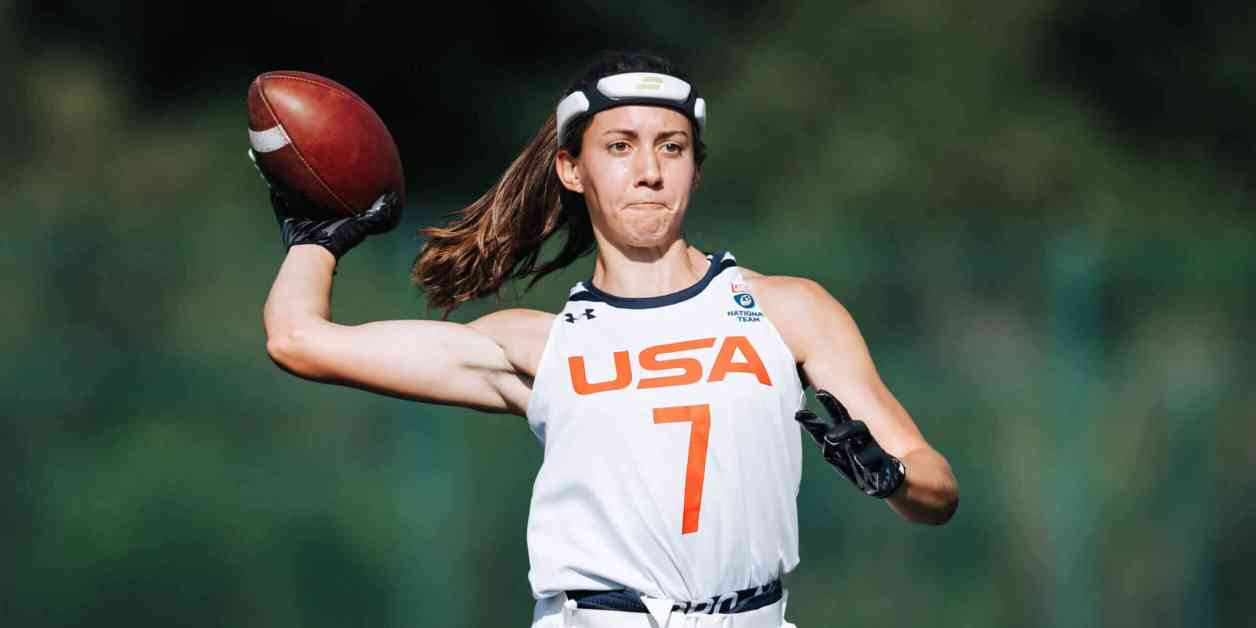Seventeen-year-old Maci Joncich was at Coronado High School’s football stadium in Las Vegas in April, thinking about her future in football. She had just made history as the youngest player on the U.S. Women’s Flag Football National Team. But not long ago, her football prospects were uncertain. Joncich mentioned that there were limited role models in the world of flag football when she first started playing. She had doubts about the future of flag football with no college teams or Olympics in sight.
However, the landscape of flag football has transformed rapidly. There are now 11 states where flag football is recognized as a girls’ varsity high school sport. Scholarships for women’s flag football are offered at 25 NAIA colleges, with five NCAA Division III colleges set to follow suit in 2025. While there are currently no professional options for boys or men beyond the club level, the American Flag Football League plans to launch the first men’s and women’s leagues in 2025. Additionally, the excitement around flag football has been amplified by the news that it will be included in the 2028 Olympics when the Summer Games return to Los Angeles.
According to USA Football, there has been a 44% increase in girls aged 6 to 17 playing flag football in the U.S. since 2014, with over 230,000 girls participating in 2023. When boys are included, there are over 1.6 million American youths playing flag football as of 2023. The sport has gained popularity in 100 countries worldwide. The NFL has also shown a strong commitment to flag football by hiring Stephanie Kwok as its first vice president of flag football. The league aims to attract more women to watch and play the sport.
For young athletes like Joncich and Brianna Hernandez-Silva, flag football has opened up new opportunities. Hernandez-Silva transitioned from baseball and softball to flag football and has seen the sport grow significantly over the years. She believes that the inclusion of flag football in the Olympics will give the sport the recognition it deserves. As the game has evolved from a casual pastime to a more competitive sport, the training opportunities for youth and high school athletes have improved. Former players like Hernandez-Silva have paved the way for future generations of flag football players.
The NFL’s focus on growing flag football is driven by various factors. The sport provides a safer alternative to tackle football, allowing young athletes to learn the fundamentals without the risk of serious injuries. The NFL’s international expansion efforts also include promoting flag football to raise awareness of the sport globally. Flag football is more accessible than tackle football, requiring minimal equipment and fewer players. This accessibility has contributed to the sport’s rapid growth and popularity.
As preparations for the 2028 Olympics progress, USA Football is working on refining its player development process. The U.S. flag football national teams are expected to have a competitive edge, but countries like Canada, Mexico, Panama, and Brazil also have elite flag football programs. The Olympics will serve as a platform to showcase world-class athletes in flag football and elevate the sport’s status on a global scale.
The inclusion of flag football in the 2028 Olympics could be a game-changer for women’s sports. With the spotlight on women’s flag football, young athletes like Joncich are poised to become the face of the sport and inspire future generations of female flag football players. The Olympics could be the catalyst for a new era of growth and recognition for flag football around the world.




